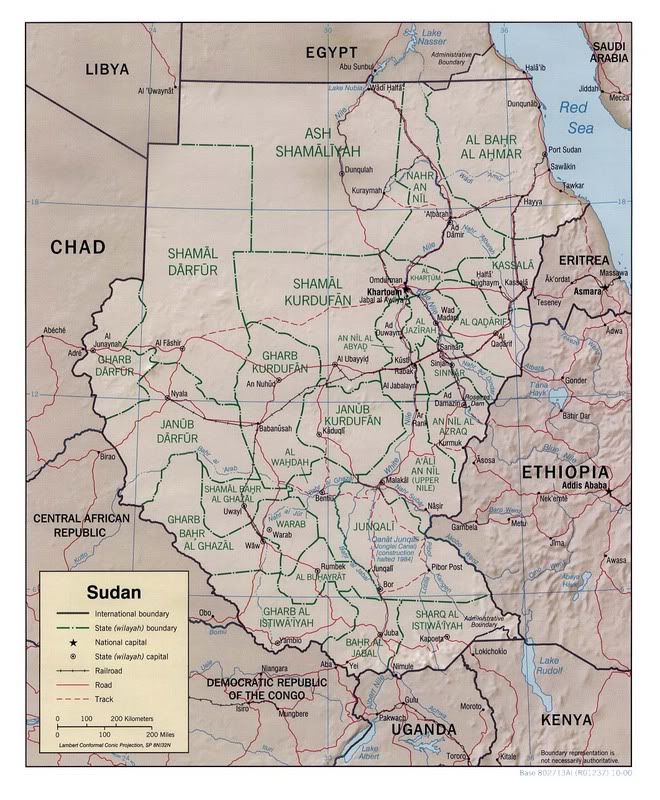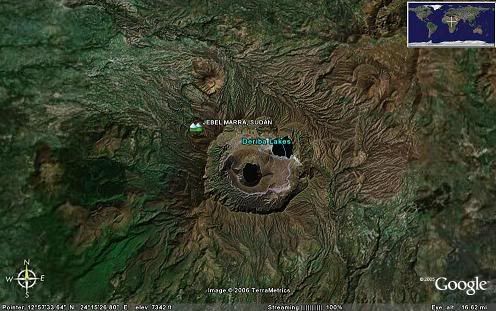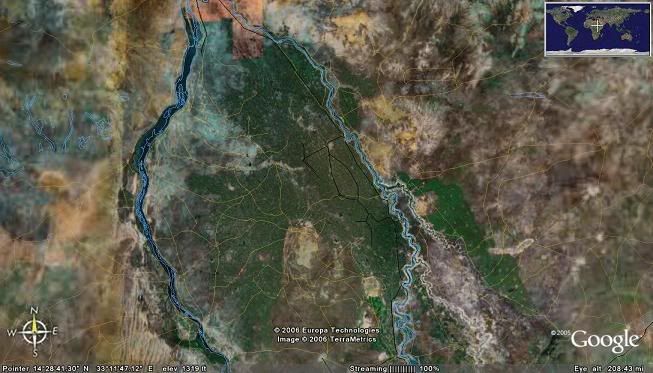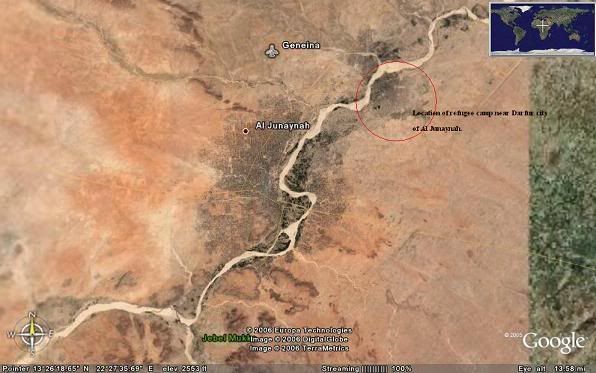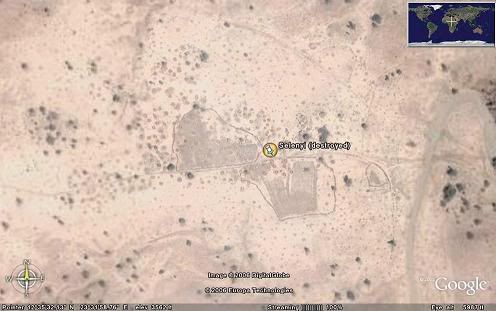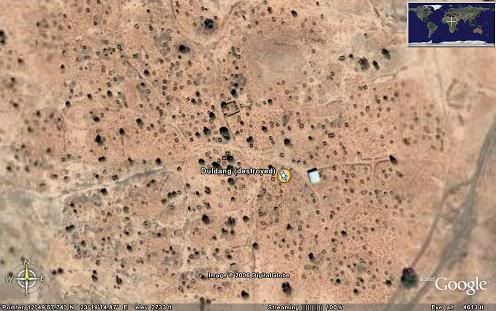Crossposted at Daily Kos
In our last Atlas Lesson, we looked at Sudan, its physical geography, Darfur, and an overview of the history of the ongoing genocide. Today, we'll discuss that topic that makes the world go round: Oil, and what it means for this war-torn nation.
Make the jump!

As we can see in this map, Sudan's oil wealth is concentrated in the southern states of the nation. It is also here that the Second Civil War, which only ended a year ago, took so many lives due to war, disease, and famine. Up to 6 million internal and external refugees exist as well.
Due to this war and continued warfare in Darfur, US Businesses have been banned from doing oil exploration and operations in Sudan. In addition, a Canadian company (Talisman Energy) was sued, and then pulled out of Sudan as well. As a result the main actors in the oil game in Sudan are Asian, primarily Chinese. This is an important point to remember as it will come up again and again as we cross the world with the Dkos Atlas Series.
Across the southern part of the nation, and across Darfur and elsewhere in Sudan, tens of millions of people live in poverty. 80% of the Sudanese workforce is dependant upon agriculture and 40% of the total population lives below the poverty line. Nevertheless, the Sudanese economy is growing in leaps and bounds and grew 7% in 2005. It is predicted to grow 12% in 2006.
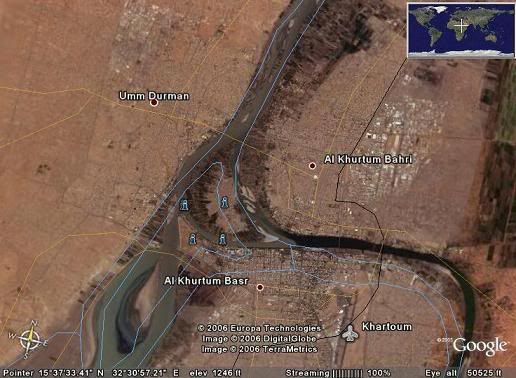
Behold Khartoum, Sudan's sprawling capital city. Note that the outskirts (not easily seen in this image) are home to internal refugee camps.
This is funding all sorts of gross displays of wealth.
To understand Sudan's standoffishness toward the world, especially the Western world, consider the Ozone café.
Here young, rich Sudanese, wearing ripped jeans and fancy gym shoes, sit outside with scoops of ice cream as an outdoor air-conditioning system sprays a cooling veil of mist. Around the corner is a new BMW dealership unloading $165,000 cars.
"Tell people you only live this life once," said Nada Gerais, a saleswoman.
While one of the world's worst humanitarian crises continues in Darfur, all across Khartoum bridges are being built, office towers are popping up, supermarkets are opening and flatbed trucks are hauling plasma screen televisions through thickening traffic.
Despite the image of Sudan as a land of cracked earth and starving people, the economy is booming, with little help from the West. Oil has turned Sudan's economy into one of the fastest growing in Africa - if not the world - emboldening the nation's already belligerent government and giving it the wherewithal to resist Western demands to end the conflict in Darfur.
American sanctions have kept many companies from Europe and the United States out of Sudan, but companies from China, Malaysia, India, Kuwait and the United Arab Emirates are racing in. Foreign direct investment has shot up from $128 million in 2000 to $2.3 billion this year - despite an American trade embargo.
Please note, that there are some reports that American oil firms are finding ways to circumvent the 1997 US Ban on doing business with and in Sudan.
Marathon Oil, based in Houston, TX, is a partner in the French Total Corp., which holds oil leases in a southern area marked by fierce fighting throughout the war. The Associated Press reported recently that Marathon, a major contributor to the Bush re-election campaign, has resumed payments to the Khartoum government and will be part of Total's operations in the oil fields.
Here's an aerial photo of Khartoum, taken this year. At the confluence of the White and Blue Niles, you can see a cleared space on the point of land there. This will be the home of luxury office and residential towers, named Almorgan.
Phase I : Almogran Central Business District A brand new 160-acre Central Business District (CBD). This state-of-the-art, prime commercial real estate will act as a hub for Eastern Africa’s modern business market. Almogran is located on the junction between The White and the Blue Nile. The CBD has been carefully master planned to create a dynamic and livable business environment, with pedestrian-friendly tree-lined streets, a river walk, and a mix of business, commercial, and residential properties. All of this comes together at the only place in the world where it is possible to have a spectacular view of the three Niles.
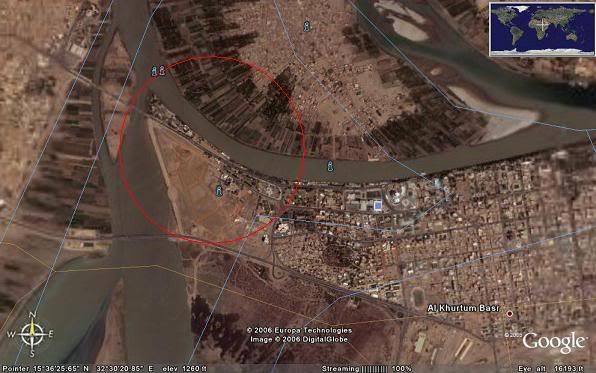
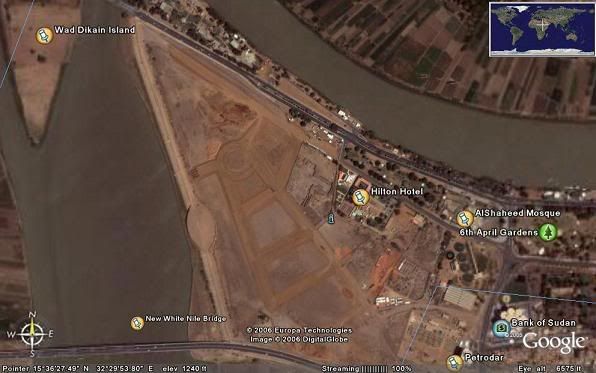
In addition, according to Wikipedia, Khartoum will also get luxury villas for the nouveau riche including a golf course.
Phase II : Almogran Residential Estate To the south of Almogran CBD, along the banks of the White Nile, lies a 1500-acre residential development featuring a variety of carefully planned neighborhoods of luxurious villas, townhouses, and apartments, complete with supporting neighborhood shops, schools, and recreational and leisure facilities. The development includes an 18-hole signature golf course and resort, public parks and gardens, with preservation of the Sunuut Forest Reserve.
It's located just to the south of the cleared space for the new luxury office towers.
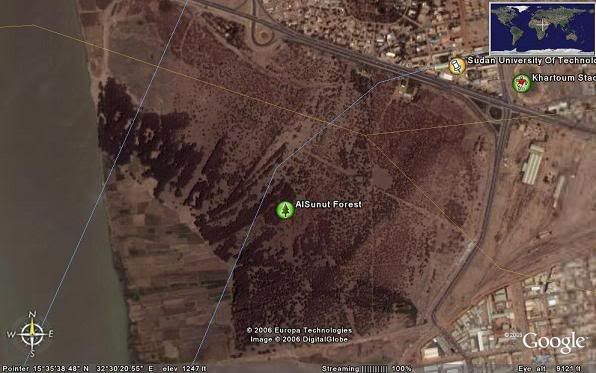
If and when Americans are given access to Sudanese oil I imagine many a Texas oilman will play a few rounds. Perhaps our esteemed leader will do the same when he leaves the White House in 2009? Nauseating thought. For the record, there are little blue info dots in Google Earth. They indicate that this new shining luxury city will be standing tall around 2010.
In addition, the Sudanese are planning their own version of the Aswan High Dam along the mainstem Nile River that will flood the valley between the 4th and 5th Cataract. It will generate electricity for a rapidly modernizing and growing nation.
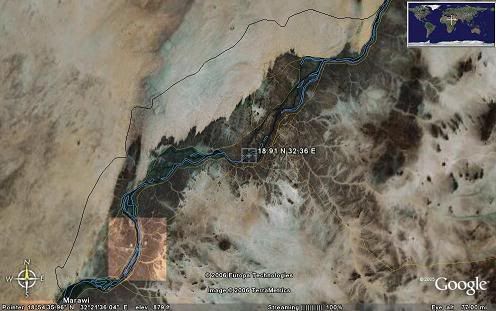
Note: A Cataract is a word derived from a Latin word meaning Waterfall. However Cataracts are more like rapids. Many of the Nile's Cataracts were formed due to a geological uplift known as the Nubian Swell. fHere's an image of the region to be flooded.
One may state, “Well, it's good that this African nation is moving forward. It's good that they're modernizing.” But the same New York Times article gives us this gem:
The wealth is hardly evenly shared, and much of Sudan, like Darfur, remains desperately poor. But overall the country's gross domestic product grew 8 percent in 2005, according to the International Monetary Fund, and is predicted to increase by 12 percent this year, largely because Sudan has substantially increased its crude oil production to 512,000 barrels a day - a drop compared with Saudi Arabia or Iran, but enough to bring billions of dollars to a country that until recently was one of the poorest on earth.
The boom is also strengthening the government's hand at home. Bashir has been on an infrastructure binge, pouring hundreds of millions of dollars into roads, bridges, power plants, hospitals and schools, projects that tend to boost any government's popularity. (Bashir seems to need it, with many people across the country, not just in Darfur, openly rebelling against his rule).
Bashir, an army general, seized power in 1989 through a military coup, and one of the biggest beneficiaries of these boom times has been his troops. El-Mahdi said that more than 70 percent of the government's share of oil profits is spent on defense. A government priority is to manufacture guns and ammunition domestically, in case an arms embargo is ever imposed.
Emphasis being mine, we can infer that line means we'll be seeing more burned villages like Gumbanga.

The sad thing is things may not even change. World Bank officials seem to be impressed with the Sudanese economic recovery, even if it comes on the death of 400,000 human beings, their villages burnt, their families and clans scattered to the desert sands and winds, their children deprived of any opportunity to share in the new wealth and new towering, glittering city springing up at the confluence of the Blue and White Nile. And it seems the Sudanese are doomed to continue to repeat the past four decades. They're not going to invest any money in Darfur (however, continue reading.) Instead, they're going to continue to develop the White and Blue Nile Valleys.
Still, Sudan had already learned to rely on the East, and because of oil exports, the economy had gained a stable momentum of its own. Inflation is now 6 percent; investment and development are reaching beyond downtown Khartoum to Sudan's central agricultural belt, an area rich in wheat and cotton that has traditionally been the engine of the national economy, and to Juba, the main city in the south.
But Sudan is a huge country, Africa's largest, at nearly 1 million square miles, or about 2.6 million square kilometers. Enormous swaths of territory in every direction are neglected, and growing class differences could sow further unrest. Rebel groups in Darfur and other areas, eager for a share in oil profits and power, pose another problem.
(Images from the article, also in the New York Times, can be found here at Sudan Watch.
But what if Darfur had oil?
Let's revisit our map of Darfur and region again.
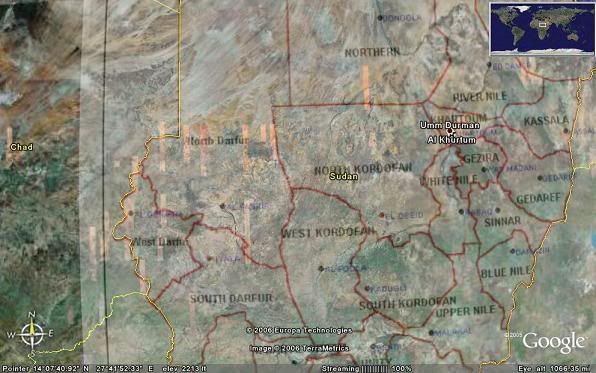
As we learned in Part One, Darfur is comprised of three states. North Darfur, West Darfur and South Darfur. As we can see in the map of oil concessions, there are some oil concessions in South Darfur State. And of the three states, South Darfur is the most stable. It also has the best climate out of all three states, being on the border between the Sahel and the tropical zone. The genocide is concentrated in West and North Darfur.
Mattes pointed out in comments that there is oil elsewhere in Darfur. From an article:
Until April 2005, it was said that whatever oil deposits existed in Darfur were confined to its southeastern corner. However, new seismographic studies brought a surprise. On April 19, 2005, Mohamed Siddig, a spokesman for the Sudan Energy Ministry, announced that a new high-yield well had been drilled in North Darfur -- several hundred kilometers northwest of the existing fields. Seismographic studies indicated that a huge basin of oil, expected to yield up to 500,000 barrels of crude per day, lay in the area. This Darfur discovery effectively doubled Sudan's oil reserves.
It is so hard to get good, accurate information out of Sudan because of the near fascist nature of its central government, and frankly, they don't want people seeing the horror they're perpetuating. But it raises an interesting, shocking, and horrifying question: Could all this not be because of ancient tribal hatreds or political manipulations, but all for oil? And the money spent on burning these villages, murdering their inhabitants and livestock and scattering the survivors into the desert is coming from the same UN Members who chastise the Sudanese government for what they are doing, the same money being spent on building a glittering shiny city to wow the world with.
Forgive my cynicism, but this stinks. Seems the Sudanese are just as cynical, and that stinks.
"The Americans are not a threat but if the international community lines up against us, that is a different issue," said Osama Daoud Abdellatif, chairman of the DAL Group, a conglomerate that owns the Coke factory, the Ozone café and other businesses. "Everything has been going so well, but Darfur could spoil the party."
I'm not even sure where to begin on what I can do, but I will do something.
This is the end of today's lesson. I apologize for its briefness. We'll finish up Sudan however, in our next installment which will also be a lesson on Rwanda and why Never Again really must mean those two simple words. Then we shall move on to the Horn of Africa, where Ethiopia is currently flexing its muscles against Eritrea and Somalia, Somalia is really 3 or 4 weak nations, and poor Djibouti is stuck in the middle of all of this and has the good (or not so good) role in being on the front lines in our War on Terror.
I am hoping that you are all enjoying this series, as I am enjoying putting it together.
